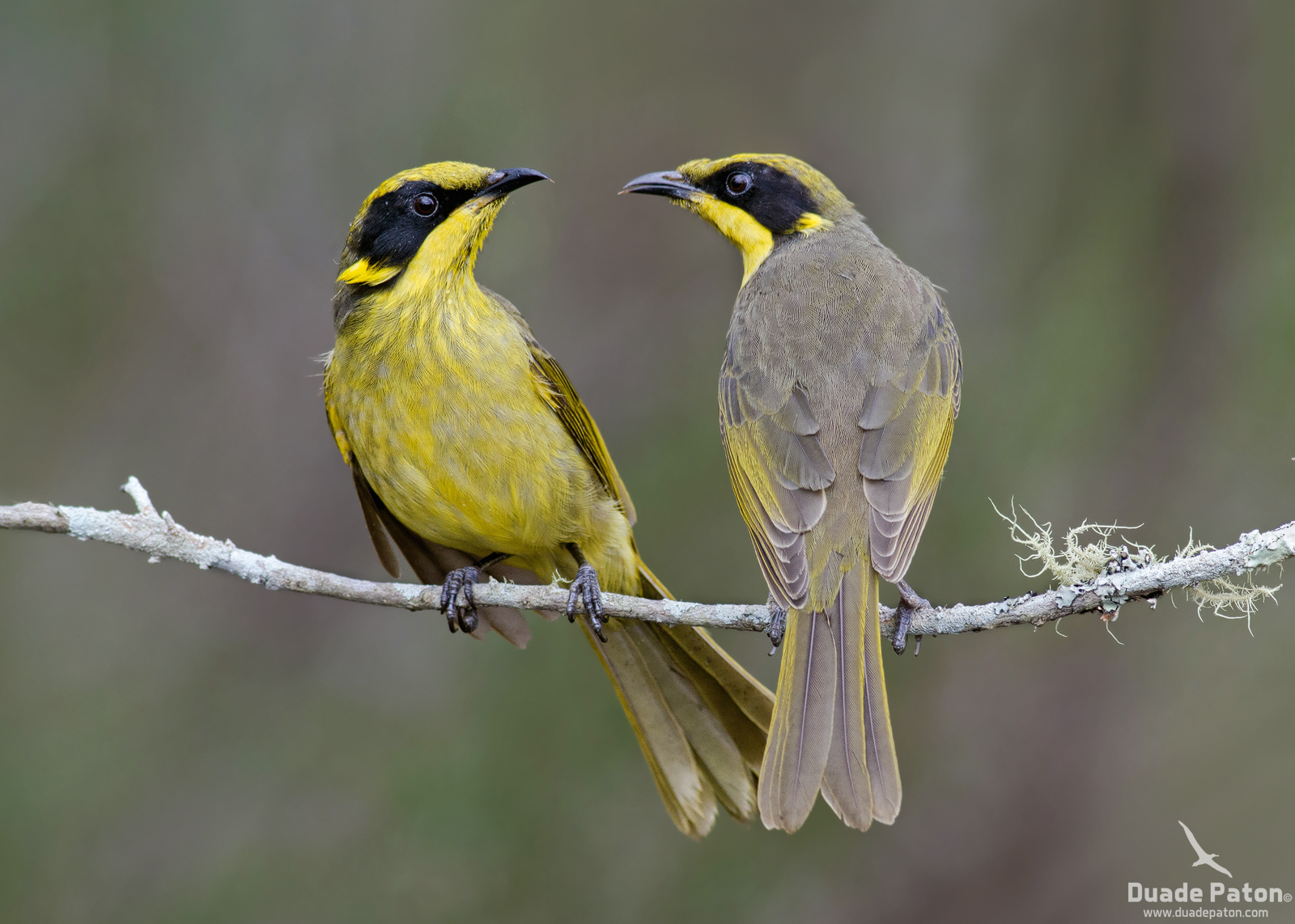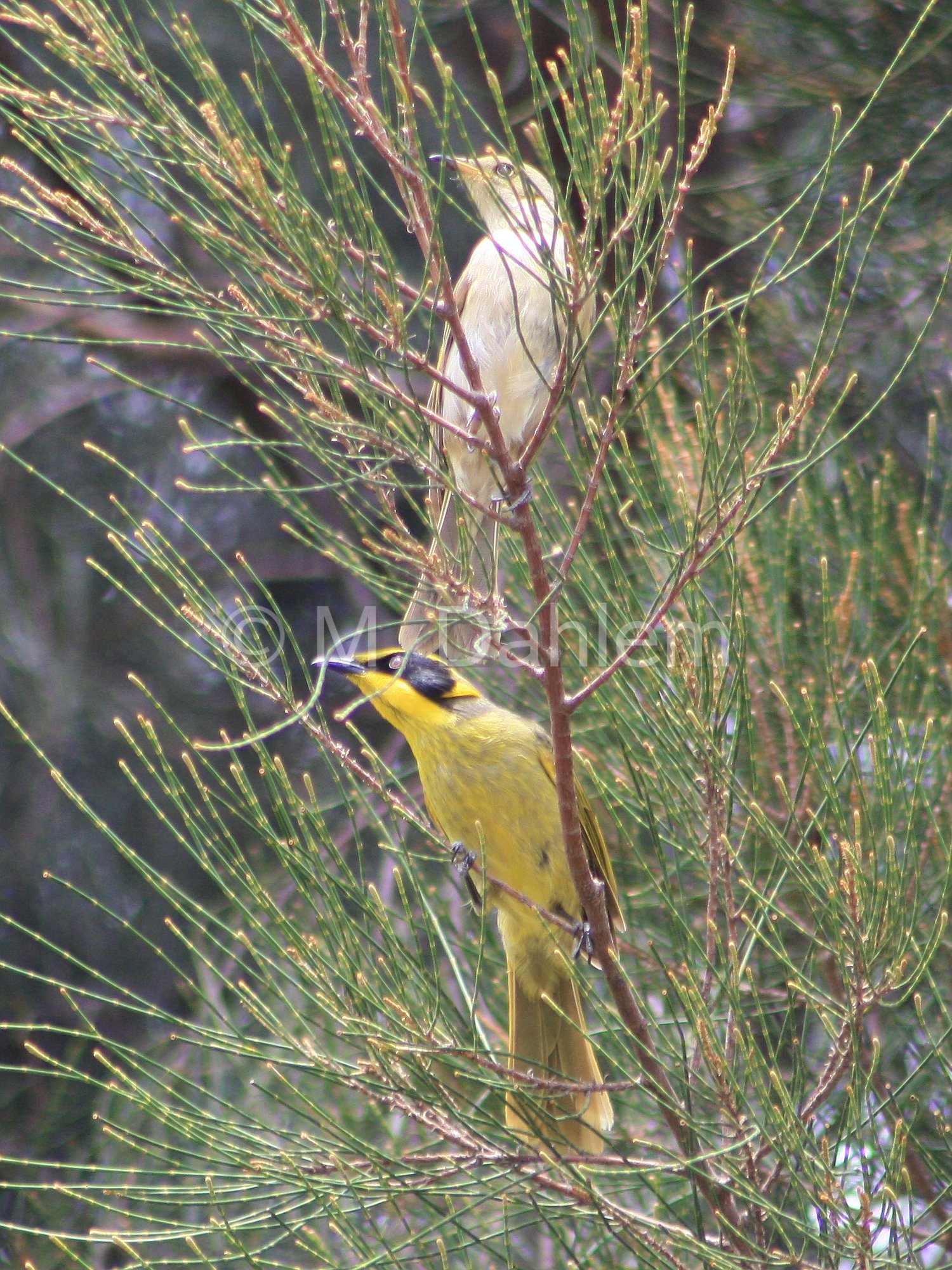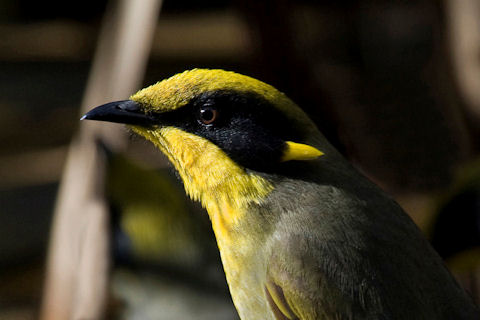
Lichenostomus melanops
TAXONOMY
Turdus melanops Latham, 1801, Port Jackson, New South
Wales, Australia.
OTHER COMMON NAMES
English: Black-faced honeyeater, golden-tufted honeyeater;
French: Mйliphage cornu; German: Gelbstirn-Honigfresser;
Spanish: Melнfago de Moсo Amarillo.
PHYSICAL CHARACTERISTICS
6.5–8.3 in (16.5–21 cm); 0.8–1.3 oz (22–36 g). Black head with
yellow crest to nape and chin to throat. Grayish underparts
and dark secondary wing feathers fading to yellowish primaries.
DISTRIBUTION
Southeastern Australia from southeastern Queensland to extreme
southeast South Australia. One well-defined subspecies (L.
m. cassidix; helmeted honeyeater) near Melbourne has been regarded
as a separate species, and several other subspecies exist.
HABITAT
Woodland and open forest dominated by eucalyptus, typically
with well-developed understory and often in gullies. Sometimes
in heathland, mallee, or woodland with native pine.
BEHAVIOR
Often found in loose colonies in which birds may cooperate to
drive out other honeyeaters and small birds and mob predators.
Mostly sedentary although some movements occur. The single
note calls tsup or see emitted frequently may act as a territorial
call. They also emit a trilling flight call. Noisy calls when birds
gather into corroborees.
FEEDING ECOLOGY AND DIET
Take insects, lerp, and manna from eucalyptus foliage and
sometimes exudates from trunks and branches. May sally and
hover. Also take nectar from eucalyptus and shrubs and occasionally
eat fruit.
REPRODUCTIVE BIOLOGY
May breed throughout the year but mostly September to November.
Apparently monogamous, though with helpers at the
nest. Nests are in shrubs a few feet above the ground. Usually
lay two eggs (occasionally one or three). Females do most incubation,
for about 15 days. Young are fed by both parents and
helpers on nectar and insects and fledge at about 16 days.
CONSERVATION STATUS
Critically Endangered helmeted honeyeaters are confined to
one population of about 100 adults east of Melbourne. Other
subspecies are not threatened.
SIGNIFICANCE TO HUMANS
Helmeted honeyeater is Victoria’s state bird.
Photo Gallery of - Yellow-tufted honeyeater




 Animalia Life
Animalia Life